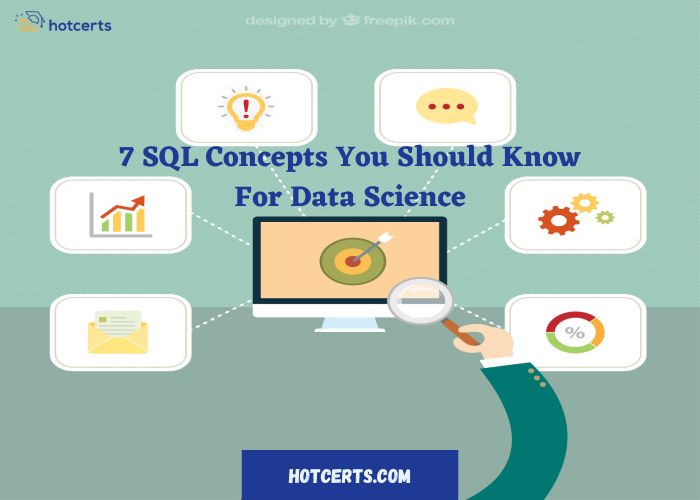7 SQL Concepts You Should Know For Data Science
Have you ever located
your self digging via a database, seeking to extract the statistics you want,
however feeling like you’re simply scratching the surface? That’s in which SQL
comes in. SQL, or Structured Query Language, is a effective device that lets in
you to speak with databases and extract the information you want in a dependent
and green way. As a information scientist, understanding a way to successfully
use SQL is important for having access to and reading information.
In this article, we’ll
be protecting seven crucial SQL ideas a good way to provide you with a robust
basis for operating with databases. Whether you’re simply beginning out in your
information technology adventure or seeking to brush up in your skills, those
ideas will set you up for success. So let’s get started!
- Relational
database:
A database that is organized using tables and
relationships between them. In a social data set, information is put away in
tables and the relationships between the data are established using foreign
keys.
- Table:
A collection of data organized into rows and
columns. Each line addresses a record, and every segment addresses a field in
that record.
- Primary
key:
A field or set of fields in a table that
exceptionally recognizes each record. Primary keys cannot contain null values
and must be unique within the table.
- Foreign
key:
A field or set of fields in a table that
alludes to the essential key of another table. Foreign keys are used to
establish relationships between tables.
- Query:
A request to retrieve data from a database.
Queries are written in Structured Query Language (SQL) and can be used to
select, insert, update, or delete data.
- Index:
A data structure that improves the performance
of database searches. Indexes allow the database to quickly locate records
based on the values in a particular field.
- Join:
A SQL operation that combines lines from at
least two tables in view of a typical field. There are several types of joins,
including inner joins, outer joins, and cross joins. Joins are utilized to
recover information from different tables in a solitary question.
Conclusion:
In conclusion, there
are several key concepts in SQL that are important for data scientists to
understand. These include the relational database model, tables, primary and
foreign keys, queries, indexes, and joins. These concepts form the foundation
of SQL and are essential for working with data stored in a database.
Understanding these concepts is crucial for data scientists who want to be able
to retrieve, manipulate, and analyze data stored in a database


.jpg)
Comments
Post a Comment